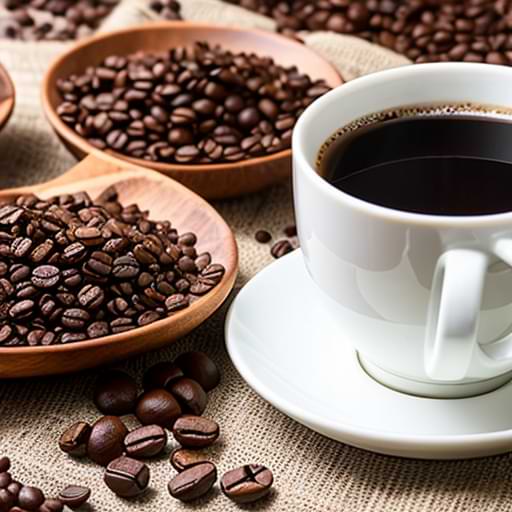Cacao and caffeine are two distinct substances that, when combined, can create an explosive energizing effect.
Cacao and caffeine have some surprising health benefits when combined correctly, but there can also be risks associated with the combination.
Cacao contains caffeine but in lower amounts than coffee. A typical sample of cacao nibs or beans will yield anywhere from zero caffeine to 1,000 parts per million of caffeine, which is less than 1/20th of the caffeine found in coffee. Cacao is very low in caffeine but high in theobromine, which provides a steady energy boost without the crash that coffee can cause.
According to Forbes, one teaspoon of cacao nibs contains about as much caffeine as a cup of decaffeinated coffee. Meanwhile, raw cacao powder has the largest dose of caffeine at 230 mg of caffeine for every 100g, while cacao powder contains 6.6mg of caffeine per 1 teaspoon of powder, while cacao nibs contain 4.6mg of caffeine per 1 teaspoon of nibs (zendesk).
In this article, we will discuss the basics of cacao and caffeine, their potential health benefits, risks associated with combining them together, and tips for getting the most out of this potent mixture.
Did you know that over 400 million cups of coffee are consumed globally every day, while in the U.S., 66% of Americans now drink coffee each day, more than any other beverage including tap water? That’s a lot of potential energy!
Meanwhile, there is no clear answer to how many cups of cacao are consumed annually. Search results do not provide a specific statistic on the global consumption of cacao in cups. However, some results on cacao consumption indicate that it has been underestimated because of hidden cacao in non-chocolate food categories.
Understanding the Basics of Cacao and Caffeine
Discovering the basics of these two substances can be an exciting journey! Cacao is a type of plant grown in tropical regions, which produces seeds that are then processed to create cocoa powder and chocolate. Cocoa powder contains cocoa solids, fat (cocoa butter), and flavoring agents.
Caffeine is a stimulant found naturally in coffee beans, tea leaves, kola nuts, and cacao beans. It has been used for centuries as a natural remedy to fight fatigue and depression.
Cacao consumption affects the brain by releasing neurotransmitters like serotonin that cause feelings of calmness and relaxation. In addition, it also contains trace amounts of caffeine which can provide some energy-boosting effects without the jitters associated with high caffeine intake from other sources such as coffee or energy drinks. Furthermore, cacao also contains compounds called polyphenols that have antioxidant properties and may help reduce inflammation in the body.
When considering theobromine and caffeine, theobromine — which is also found in cacao — is becoming a popular alternative to caffeine because it provides energy without the spike and crash that caffeine can cause.
The effects of consuming both cacao and caffeine will depend on factors such as dosage, individual metabolism, existing health conditions, etc. However, both substances have potential benefits if taken responsibly; for example, they could help reduce stress levels when consumed in moderate amounts or act as appetite suppressants when taken before meals. It’s important to remember that it’s best not to exceed recommended doses due to possible adverse reactions such as insomnia or headaches.

Health Benefits of Combining Cacao and Caffeine
Combining two of the world’s most popular stimulants offers many potential health benefits that are worth exploring. Cacao and caffeine have been used for centuries by cultures around the world as a source of energy and pleasure, but more recently, researchers have uncovered their combined benefits.
- Improved mental focus and concentration
- Enhanced physical performance
- Reduced inflammation
- Improved mood
- Increased alertness
These benefits come from combining the active compounds in both cacao and caffeine. Cacao contains flavonoids, which act as antioxidants that can help reduce inflammation. Caffeine provides an energy boost to help improve mental focus and physical performance. When taken together, these two substances work synergistically to provide a longer-lasting effect than either one would provide alone.
Studies have also shown that taking them together can increase alertness without causing jitters or other negative side effects often associated with high levels of caffeine intake. Additionally, research suggests that taking them together may lead to improved moods due to the release of endorphins produced when consuming both substances.
According to Health Line, L-theanine and caffeine are two substances that, when taken together, can increase alertness without causing jitters or other negative side effects often associated with high levels of caffeine intake. In addition, a small study found that a combination of L-theanine and caffeine helped a group of young adults focus better during demanding tasks. Additionally, some research indicates that L-theanine could be beneficial for a good night’s sleep, which could be because it helps to reduce physiological responses to stress by inhibiting excitatory responses in the brain
By combining cacao and caffeine in a balanced manner, individuals may experience enhanced cognitive functioning and increased physical endurance while enjoying all the antioxidant benefits found in cacao beans. Knowing this information can be useful for those who want to get more out of their day-to-day activities without compromising their health or well-being.
Potential Risks of Consuming Cacao and Caffeine Together
You may experience enhanced performance when combining these two stimulants, but it’s important to be aware of the potential risks associated with doing so.
Overconsumption of cacao and caffeine can lead to various negative side effects such as jitteriness, palpitations, restlessness, headaches, dehydration, and insomnia.
Although there are health benefits associated with consuming both of these substances separately in moderation, taking them together in large amounts can be dangerous.
- It’s advised that pregnant women avoid any kind of caffeine consumption altogether due to its potential risk on fetal development.
- In addition to the physical risks posed by combining cacao and caffeine, there is also a psychological component that should not be overlooked.
- Too much stimulation from these two stimulants can disrupt natural sleep patterns and cause mental fatigue or anxiety when taken too frequently or in high doses.
- Consuming them late at night can make it difficult for people to fall asleep and stay asleep due to their stimulating properties.
- Moreover, some studies have indicated that regular consumption of caffeinated beverages may increase the likelihood of developing depression or anxiety over time.
It’s therefore essential for individuals who choose to consume these substances together to do so cautiously and responsibly in order to prevent adverse reactions both mentally and physically.
Medical News Today actually notes that “While some studies suggest that caffeine intake could reduce the incidence of depression, others have shown a connection between coffee intake and an increase in depression.”
Combining cacao and caffeine has been found beneficial when consumed responsibly; however, it’s important to remember that moderation is key for ensuring one’s safety while enjoying this combination’s potentially positive effects.
Tips for Getting the Most Out of Cacao and Caffeine
By combining these two powerful substances, you can get the most out of their beneficial effects while avoiding any potential risks. Cacao and caffeine are both rich sources of antioxidants that can help protect your body’s cells from damage due to free radicals. When consumed in combination, they can help boost mental clarity and alertness while providing an energy boost.
Both cacao and caffeine have anti-inflammatory properties that may help relieve joint pain and fatigue. To get the most out of cacao and caffeine, it’s important to consume them in moderation. Too much of either one can lead to insomnia or anxiety, so it’s best to find a balance that works for you.
It’s also important to stay hydrated when consuming these substances as dehydration can affect how your body absorbs them. Additionally, make sure to monitor your diet when incorporating these products into your routine as they are calorie-dense foods that may contribute to weight gain if not consumed responsibly.
Caffeine has been found to reduce absorption of iron from food sources, so it’s recommended for those who take supplements containing iron or eat iron-rich foods like spinach or red meat regularly to avoid consuming too much caffeine with meals containing high amounts of iron. Furthermore, those taking medications should also be mindful when consuming caffeinated beverages as certain drugs such as antibiotics may interact negatively with caffeine if taken together at the same time.
By taking all these factors into consideration, you’ll be able to maximize the benefits of both cacao and caffeine while minimizing any potential risks associated with overconsumption.
Final Thoughts: Brewed Cacao
You may now have a better understanding of the benefits and risks of consuming cacao and caffeine together. But it’s important to remember that there’s no one-size-fits-all answer when it comes to enjoying these two substances in tandem.
It all depends on your individual needs and preferences. By finding the right balance between cacao and caffeine, you can make sure you get the most out of their unique properties. So don’t be afraid to experiment – you might just find the perfect combination!
